The Complete Architecture
How Scientific Socialism Captured Global Governance
A comprehensive analysis of the institutional, operational, and enforcement mechanisms that have transformed the Venice Declaration's vision into operational reality.
Executive Summary
This analysis documents a systematic 130-year project that has constructed the most sophisticated totalitarian apparatus in human history — one that operates through moral authority rather than political coercion. The documentary record reveals identical institutional templates, coordinated implementation timelines, overlapping networks of architects, and deliberate replication of governance mechanisms that defined the worst totalitarian regimes of the 20th century. The difference is scale and sophistication: where Hitler, Stalin, and Mao operated at national levels through crude political apparatus, this system operates globally through technical expertise and ethical mandate, making it far more insidious and potentially irreversible once fully activated.
The foundational mechanism is the systematic replication of a hierarchical ‘clearing house’ model — first perfected in British banking — across every domain of social organisation, creating apparent decentralisation while concentrating ultimate control at the apex. Through ten integrated vectors spanning ideological capture, professional control, information management, economic compliance, and technological surveillance, this system has achieved what the 1986 Venice Declaration envisioned: science positioned as the source rather than subject of ethical frameworks across all aspects of human experience. The result is operational scientific socialism where resistance becomes literally unthinkable — economic survival requires expert compliance, professional advancement requires ethical conformity, and democratic dissent is pathologised as moral failure.
The system is not approaching implementation; as proved by COVID-19 it is operational, and the window for democratic resistance is rapidly closing.
The Venice Declaration analysis demonstrated how science successfully claimed moral authority across eleven domains of human experience, positioning itself as the source rather than subject of ethical frameworks. What remains is to trace the concrete mechanisms through which this ideological capture became reality. The evidence reveals a systematic 130-year project that has constructed the most sophisticated totalitarian apparatus in human history — one that operates through moral authority rather than political coercion.
This is not hyperbole.
The documentary record shows identical institutional templates, coordinated implementation timelines, overlapping networks of architects, and deliberate replication of governance mechanisms that defined the worst totalitarian regimes of the 20th century. The difference is scale and sophistication: where Hitler, Stalin, and Mao operated at national levels through crude political apparatus, this system operates globally through technical expertise and ethical mandate, making it far more insidious — and potentially irreversible once fully activated.
Clearing House Hierarchy
The foundational mechanism underlying this transformation is the systematic replication of a hierarchical ‘clearing house’ model across every domain of social organisation. First perfected in British banking (local banks → clearing banks → Bank of England), this architecture creates apparent decentralisation while concentrating ultimate control at the apex.
The pattern was methodically exported: the Federal Reserve replicated the British model in 1913, the Bank for International Settlements scaled it globally in 1930, and the same template now governs virtually every aspect of modern life. Local institutions operate with apparent autonomy while remaining dependent on higher-tier ‘clearing’ functions that can override local decisions during ‘exceptional circumstances’ — which have become permanent features of the system.
This is the concrete meaning of ‘subsidiarity’ — not genuine decentralisation, but the strategic positioning of decision-making authority at whatever level serves central control. Environmental policy gets ‘subsidiarity’ to global institutions because climate is allegedly planetary; local democratic preferences get overridden because experts allegedly possess superior knowledge; individual rights become conditional on fulfilling ‘responsibilities’ defined by allegedly credentialed authorities.
The genius lies in making this hierarchical control appear inevitable and beneficial. Each crisis — financial collapse, health emergency, environmental threat — demonstrates the ‘need’ for coordination at the next level up. Local communities cannot handle pandemics; national governments cannot address climate change; democratic institutions cannot process technical complexity. Each expansion of expert authority is presented as reluctant necessity rather than systematic capture.
Professional and Informational Control
The clearing house hierarchy requires enforcement mechanisms to ensure compliance without overt coercion. Two primary systems have been deployed: professional disciplinary frameworks and information control apparatus.
Professional control operates through ‘ethics codes’ that transform institutional compliance into moral obligation. Healthcare workers were fired during COVID-19 not for illegal activity, but for ‘ethics violations’ — questioning vaccine mandates, discussing alternative treatments, or prioritising individual patient assessment over standardised protocols. Scientists face ‘ethics review’ for challenging climate models or disputing attribution claims. Mathematicians risk career consequences for creating models that contradict expert consensus. Corporate executives must demonstrate compliance with ESG frameworks or face investor flight and regulatory pressure.
These are not isolated incidents but systematic disciplinary apparatus designed to eliminate dissent within professional classes. The ‘ethics’ framework is crucial because it makes resistance appear not just wrong but immoral, while giving enforcement bodies moral authority to destroy careers without legal process.
Information control operates through the weaponisation of ‘fact-checking’, ‘content moderation’, and ‘media literacy’ frameworks. The systematic suppression of legitimate scientific discussion during COVID-19 — including laboratory origin theories, natural immunity research, and treatment alternatives — demonstrated the complete capture of information systems by expert institutions. Alternative perspectives are eliminated not through overt censorship but through ethical frameworks that define dissent from expert consensus as ‘misinformation’ or ‘disinformation’.
The ‘right to be forgotten’ serves as the mechanism for erasing inconvenient historical evidence, while ‘media literacy’ programs train populations to defer to credentialed authorities rather than evaluate evidence independently. The result is an information environment where expert consensus appears more robust than it actually is, systematically deceiving democratic publics about genuine scientific uncertainty and legitimate policy alternatives.
The Enron Model
The 2001 Enron collapse provided the crisis leverage needed to implement systematic corporate capture through ‘ethics frameworks’. While Enron's crimes were clearly illegal, the response focused on implementing ‘ethics codes’ across all major economies simultaneously — the Sarbanes-Oxley Act, Higgs Report, Cromme Code, and dozens of similar frameworks worldwide.
This established the template for economic control through moral authority. Rather than direct regulatory oversight, corporations demonstrate compliance with expert-designed ‘ethical frameworks’ — ESG ratings, stakeholder governance, corporate social responsibility metrics. Non-compliance results not in legal penalties but in investment withdrawal, insurance cancellation, and supply chain exclusion.
The 1993 ‘Interfaith Declaration on Business Ethics’ — fully developed by HRH Duke of Edinburgh, Prince El Hassan bin Talal and Evelyn de Rothschild eight years before Enron collapsed — had already outlined the entire framework that would be ‘urgently’ implemented after the crisis. This pre-positioning of solutions reveals the systematic nature of the project: crises provide the leverage, but the institutional responses were designed decades in advance.
Most importantly, the Enron model demonstrated how to make corporate compliance appear voluntary while creating systematic dependency. Companies ‘choose’ to adopt ESG frameworks and stakeholder governance, but market access becomes impossible without compliance. Economic freedom is preserved in form while eliminated in substance.
The Totalitarian Synthesis
The systematic merger of law and ethics represents the completion of a governance model that defined the worst totalitarian regimes of the 20th century. Hitler's dictum that ‘the total state must not know any difference between law and ethics’ was implemented through identical mechanisms under different guises across Nazi Germany, Soviet Union, and Fascist Italy — despite their supposed ideological differences.
The pattern was consistent: undermine existing institutions, attack traditional sources of authority, create permanent crisis requiring expert management, replace legal frameworks with ethical mandates, eliminate dissent as moral failure rather than legitimate disagreement. The result was arbitrary rule disguised as moral necessity — exactly what we observe today at global scale.
Contemporary implementation uses identical methods: traditional institutions are systematically undermined through ‘ethics’ critiques; religious and cultural authorities are subordinated to scientific expertise; democratic processes are overridden during permanent ‘emergencies’; legal frameworks are replaced by expert-designed ‘ethical guidelines’; dissent from expert consensus is pathologised as moral failure, psychological disorder, or security threat.
The only difference is sophistication. Where 20th-century totalitarians operated through crude political apparatus, this system operates through technical expertise and moral authority. This makes it far more insidious because resistance appears not just futile but immoral. Questioning expert consensus isn't just wrong — it's ethically irresponsible, scientifically illiterate, and socially pathological.
Kung's Systematic Campaign
Hans Kung's three-decade campaign (1993-2021) provides the clearest documentation of how this system was systematically implemented across all major institutions. His 1993 ‘Global Ethic’ manifesto established the ideological framework; his 1999 ‘Call to Our Guiding Institutions’ provided operational instructions for every sector of society; his subsequent work culminated in the 2005 establishment of the UN Ethics Office with enforcement powers over all international personnel.
Kung's genius lay in simultaneously targeting every domain: religion was called to subordinate theological claims to universal ethics; governments were pressed to implement ‘ethical mandates’ superseding democratic preferences; business was directed toward stakeholder governance; education was restructured around global citizenship; media was enlisted for ethical messaging; science was captured through ethics frameworks; international organisations were empowered to override national sovereignty.
This wasn't organic evolution but coordinated institutional capture. The same figures appear across all initiatives: Prince El Hassan bin Talal (business ethics, global economic ethics), Jeffrey Sachs (economic transformation, Earth Charter), Leonardo Boff (liberation theology, Earth Charter), Mary Robinson (human rights, global governance, Collegium International). The timing coordination is remarkable: 1993 marked both Kung's Global Ethic and the Interfaith Declaration; 2001 brought Enron, anthrax, and 9/11; 2002 saw waves of ‘ethics’ legislation globally.
The Earth Charter
The Earth Charter represents the constitutional foundation for this new form of governance. Developed through a six-year ‘worldwide consultation’ (1994-2000) overseen by Maurice Strong, Mikhail Gorbachev, and Steven Rockefeller, it established the institutional architecture for ‘Global Governance through Global Ethics’.
The Charter's genius lies in its comprehensive scope. Every aspect of human activity is subjected to ‘ethical evaluation’ according to expert-designed sustainability metrics. Property rights become conditional on serving the ‘common good’ as defined by international authorities. Democratic processes are subordinated to technical expertise on ‘planetary’ issues. Individual rights are transformed into collective responsibilities enforced through global institutions.
Most importantly, the Charter establishes the legal pathway for this transformation. As ‘soft law’, it creates the moral and institutional foundation for ‘hard law’ instruments that will make compliance mandatory. International lawyers explicitly recognise its potential to become legally binding through various pathways, with the UN resolution recognition being the most direct route.
Good Governance as Universal Capture
Kung's operational blueprint required a systematic delivery mechanism to embed ethical authority across all institutional domains. That mechanism was ‘Good Governance’ — a framework that appears beneficial while creating comprehensive expert control. The genius lies in the terminology: who could oppose ‘good’ governance? Yet the operational definition transforms all governance decisions into ‘ethical evaluations’ conducted by credentialed authorities.
The implementation timeline reveals coordinated institutional capture rather than organic evolution. Starting with the 1992 Cadbury Report and 1994 King Report, identical ‘ethical leadership’ frameworks were systematically deployed across every sector: government (local to international), business (corporate governance codes), education (ethical leadership curricula), healthcare (NHS compliance standards), religion (interfaith ethical guidelines), science (UNESCO and ICSU protocols), and civil society organisations. Each domain now operates under expert-designed compliance standards that subordinate democratic accountability to ethical evaluation.
The philosophical foundation represents a systematic transformation of individual rights into collective responsibilities. The intellectual progression from Hermann Cohen's ‘universal moral responsibility’ through Emmanuel Levinas's ‘infinite responsibility for the Other’ to Hans Jonas's environmental and intergenerational responsibility creates the three-dimensional control matrix: social justice (rights transferred to collective authorities), environmental justice (individual activities subject to planetary assessments), and intergenerational justice (present decisions subject to expert projections about future impacts).
The enforcement mechanism operates through ‘accountability’ — the dynamic component that enables continuous ‘rebalancing of rights and responsibilities’ as ethical frameworks ‘evolve’. This creates systematic expansion of expert authority while maintaining the appearance of responsive governance. The system achieves comprehensive control by making resistance appear immoral rather than using physical coercion, completing the transformation of democratic governance into expert management guided by evolving ethical mandates.
Development as Implementation Vector
The Good Governance frameworks required a global testing ground and delivery mechanism to refine their effectiveness before universal deployment. International development programs provided the perfect laboratory: developing countries desperate for aid became willing subjects for governance experimentation, while ‘helping the poor’ provided unassailable moral justification for comprehensive institutional transformation.
Jeffrey Sachs exemplifies the systematic coordination across implementation phases. His early career implementing economic ‘shock therapy’ in Eastern Europe and Russia tested the mechanisms for rapid institutional transformation under crisis conditions. His subsequent leadership of the UN Millennium Development Goals translated these techniques into ‘sustainable development’ frameworks that made aid conditional on adopting expert-designed governance systems. His prominent role in the Earth Charter initiative demonstrates how the same figures orchestrate seemingly separate developments across decades.
The sustainable development apparatus operates through a sophisticated matrix of conditional governance. Countries receiving development assistance must demonstrate compliance with ‘good governance’ principles: transparency, accountability, participatory decision-making, and rule of law — all defined and evaluated by international expert bodies. Environmental protection becomes mandatory through biodiversity conservation requirements. Social justice implementation occurs through gender equality mandates and minority rights protocols. Economic governance transforms through structural adjustment programs requiring market liberalisation and fiscal responsibility measures.
Most insidiously, this creates a laboratory for testing governance technologies that are subsequently exported to developed nations. Digital identity systems pioneered in Kenya become models for European digital wallets. Carbon credit mechanisms tested in Costa Rica become templates for global carbon markets. Community health worker programs in Rwanda provide the blueprint for reimagining healthcare delivery in Western nations. Participatory budgeting experiments in Brazil justify ‘deliberative democracy’ initiatives that bypass traditional representative institutions.
The three-dimensional control matrix operates through development metrics that make continued assistance conditional on measurable progress across social, environmental, and intergenerational indicators. Countries must demonstrate improvements in gender equality indices, carbon emission reductions, and institutional capacity building — all evaluated according to internationally standardised frameworks that effectively transfer sovereignty over domestic policy to expert evaluation bodies.
The genius lies in making this comprehensive governance transformation appear voluntary and beneficial. Countries ‘choose’ to adopt these frameworks to access desperately needed development finance. Citizens experience improved services and infrastructure while remaining unaware that their governance systems have been systematically restructured according to external specifications. Traditional authorities are displaced by NGOs and civil society organisations that serve as implementation arms for international governance frameworks.
Development programs thus serve as the primary delivery mechanism for operationalising the theoretical frameworks documented in previous sections. They provide the concrete pathway through which abstract concepts like ‘global governance through global ethics’ become implemented reality, while the moral authority of ‘sustainable development’ makes resistance appear selfish and irresponsible.
The Game B Vector
The Game B network reveals how this project extends beyond institutional capture to intellectual capture. Targeting complexity theorists, systems thinkers, and tech entrepreneurs, Game B presents identical totalitarian architecture disguised as sophisticated emergence theory.
Jordan Hall's explicit rejection of individual rights (‘there are no freedoms, only responsibilities’), Bret Weinstein's warning against ‘social truth’ (democratic consensus), Daniel Schmachtenberger's call for ‘alignment of every agent’ (total surveillance and control), and Jim Rutt's admission that Game B ‘could lead to worse nightmare than Game A’ (acknowledged potential for totalitarianism) reveal the project's true nature.
The intellectual sophistication is crucial because it captures potential opposition before it forms. Complexity theory, systems thinking, and emergence frameworks provide scientific-sounding justification for hierarchical control systems. ‘Human super-organism’ concepts make individual autonomy appear pathological. ‘Collective intelligence’ frameworks justify expert override of democratic processes.
Most insidiously, Game B explicitly targets the intellectual classes that might otherwise resist this transformation. By capturing systems thinkers, tech leaders, and academic theorists, the project neutralises potential sources of sophisticated opposition — while gaining intellectual credibility for its totalitarian architecture.
Scientific Socialism Achieved
These elements combine into a comprehensive totalitarian system that transcends traditional political categories. This is not capitalism versus socialism in any conventional sense, but the successful implementation of scientific socialism — governance by expert institutions claiming superior access to objective truth about human flourishing and social organisation.
The system operates through ten integrated vectors:
Ideological Capture: Scientific expertise claimed moral authority across all domains through the Venice Declaration logic, positioning science as the source rather than subject of ethical frameworks.
Institutional Template: Hierarchical clearing house architecture systematically replicated across all sectors, creating apparent decentralisation while concentrating ultimate control.
Professional Control: Ethics codes eliminate dissent within expert classes by making resistance appear immoral rather than legitimate disagreement.
Information Control: Fact-checking and content moderation frameworks eliminate alternative perspectives while maintaining the appearance of open discourse.
Economic Capture: ESG frameworks and stakeholder governance make market access conditional on compliance with expert-designed ethical mandates.
Implementation Pathway: Good Governance frameworks systematically embedded ethical authority across all institutional domains, transforming democratic accountability into expert compliance through ‘ethical leadership’ requirements.
Legal Framework: Systematic merger of law and ethics enables arbitrary rule disguised as moral necessity, with continuous ‘rebalancing of rights and responsibilities’ expanding expert authority.
Development Vector: International development programs serve as testing grounds and delivery mechanisms for governance transformation, making aid conditional on adopting expert-designed institutional frameworks.
Constitutional Foundation: Earth Charter provides the institutional architecture for Global Governance through Global Ethics with legal pathway to mandatory compliance.
Intellectual Capture: Game B complexity theory neutralises potential sophisticated opposition while providing scientific justification for hierarchical control systems.
The result is a totalising system where resistance becomes literally unthinkable. Economic survival requires ESG compliance. Professional advancement requires ethical conformity. Information access requires expert validation. Political legitimacy requires scientific endorsement. Legal protection requires moral standing. Social acceptance requires global citizenship. Intellectual credibility requires systems thinking. Governance decisions require ethical evaluation by credentialed authorities. Development assistance requires institutional transformation according to expert specifications.
Resistance as Pathology
The system's ultimate sophistication lies in making resistance appear pathological. Questioning expert consensus isn't just wrong — it's scientifically illiterate, ethically irresponsible, economically irrational, legally suspect, socially destructive, professionally suicidal, and psychologically unhealthy.
This represents the completion of what the Venice Declaration identified as science's capture of moral authority. The system doesn't argue against alternatives; it makes alternatives appear immoral, irrational, and ultimately impossible. Democratic resistance becomes ‘populism’. Scientific dissent becomes ‘misinformation’. Economic independence becomes ‘unsustainable’. Cultural preservation becomes ‘discriminatory’. Individual autonomy becomes ‘antisocial’.
The genius lies in eliminating opposition through moral authority rather than physical coercion. The gulags are unnecessary when compliance appears virtuous and resistance appears pathological. The system achieves total control while maintaining the appearance of freedom, democracy, and scientific objectivity.
From Tektology to Total Surveillance
Alexander Bogdanov's Tektology provided the conceptual blueprint for scientific socialism, but its transformation into operational control required concrete management technologies that could quantify, monitor, and adjust human behavior in real-time. The progression from theoretical organisational science to practical governance apparatus occurred through systematic development of measurement and control mechanisms that now enable comprehensive management of entire populations under the guise of scientific administration.
The critical breakthrough came with General Systems Theory in the 1940s, which formalised Bogdanov's organisational principles into mathematically precise models, and Wassily Leontief's Input-Output Analysis, which provided quantitative tools for treating social systems as machines with measurable inputs, processes, and outputs. These developments created the foundation for comprehensive societal management through indicator-based control systems.
The U.S. Department of Defense's Planning-Programming-Budgeting System (PPBS) under Robert McNamara demonstrated how systems thinking could operationalise institutional control by requiring all decisions to be justified through quantified analysis conducted by credentialed experts. McNamara's subsequent leadership of the World Bank exported these techniques globally through development programs that made aid conditional on adopting ‘scientific’ management systems.
Result-Based Management (RBM) and Key Performance Indicators (KPIs) refined these control mechanisms by making all organisational activities conditional on measurable outcomes defined by expert evaluation. Organisations ‘chose’ to adopt these frameworks while market access became impossible without demonstrating measurable progress according to expert-designed metrics, creating the template for universal institutional capture through voluntary submission to expert-managed measurement systems.
The United Nations Sustainable Development Goals represent the culmination of this quantification apparatus. The 17 goals, broken into 169 targets measured by 232 indicators, create a comprehensive framework for managing all human activity globally. Countries must demonstrate measurable progress across multiple interdependent dimensions, effectively transferring sovereignty over domestic policy to international expert bodies that define metrics, conduct evaluations, and determine acceptable performance levels.
The COVID-19 pandemic demonstrated the ultimate sophistication of indicator-based management through real-time behavioral control disguised as public health response. Government dashboards tracking infection rates, vaccination percentages, and compliance metrics enabled continuous adjustment of social restrictions based on algorithmic analysis of population behavior. Contact tracing, vaccine passports, and digital health certificates created comprehensive surveillance infrastructure while maintaining the appearance of voluntary participation in public health measures.
The integration of artificial intelligence completes the transformation of Bogdanov's theoretical super-organism into operational reality. AI systems monitor social media for ‘misinformation’, adjust content algorithms to promote expert-approved messaging, and provide real-time policy recommendations based on population behavioral data. This technological apparatus operates below conscious awareness, with citizens experiencing improved services while their behavior is continuously monitored, measured, and adjusted according to expert-designed algorithms. Tektology has been achieved through complete technologisation of social organisation, transforming Bogdanov's metaphorical super-organism into a literal cybernetic system where questioning expert authority becomes equivalent to cellular rebellion against the organism's vital functions.
The Hour of Decision
This analysis documents the systematic construction of a global totalitarian apparatus using the institutional mechanisms, enforcement systems, and ideological frameworks that defined the worst regimes of the 20th century. The difference is scale, sophistication, and the use of moral authority rather than political coercion to eliminate resistance.
The system is not approaching implementation — it is operational. Healthcare workers have been fired for ethics violations. Scientists face career destruction for climate dissent. Corporate executives must demonstrate ESG compliance. Information systems eliminate alternative perspectives. Legal frameworks defer to expert consensus. International institutions override national sovereignty. Professional associations enforce ideological conformity. Government at all levels operates under ‘ethical leadership’ requirements that subordinate democratic accountability to expert evaluation. Developing nations must restructure their governance systems to access international assistance.
The question is not whether this system will be implemented, but whether enough people will recognise its nature before it becomes irreversible. The window for democratic resistance is rapidly closing as each institutional capture makes opposition more difficult and dangerous. And the final step appears to relate to integrating carefully controlled 'ethics' directly into the economy itself.
The Venice Declaration represented the ideological breakthrough. What is documented here is the complete institutional, operational, and enforcement apparatus that has transformed that vision into global reality. Scientific socialism has been achieved not through political revolution but through systematic capture of moral authority across every domain of human experience.
The hour of decision has arrived. Either this system will be recognised and resisted while democratic alternatives remain possible, or it will achieve the complete elimination of human autonomy under the banner of scientific objectivity and moral necessity. There is no middle ground between what counts as legitimate freedom and Alexander Bogdanov’s ‘human super-organism’.
The choice must be made now, while choice remains possible.



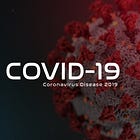


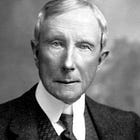
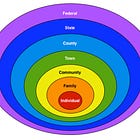




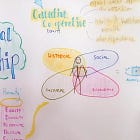



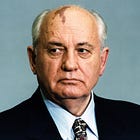
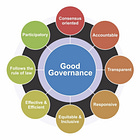
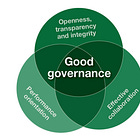




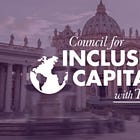

This is the most profound analysis of the subversion of our political systems and human rights that I have read. I am forwarding it to many.
esc key. the most under-rated writer and thinker on substack and possibly the internet